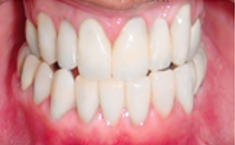Our journal “Annals of Dental Specialty” is a double-blind peer-reviewed journal designed by a group of renowned specialists from various fields of dentistry. This journal is formulated to discuss newer techniques and original research works and reviews at the national platform from all fields of dentistry. The journal will be published every quarter.
Annals of dental Specialty is an Open Access journal, all articles are distributed under the terms of the Creative Commons Attribution-Non-Commercial-Share Alike 4.0 (CC BY-NC-SA 4.0), allowing third parties to copy and redistribute the material in any medium or format and to remix, transform, and build upon the material, provided the original work is properly cited and states its license. Creative Commons Corporation (“Creative Commons”) provides this license as a standardized framework for sharing original works of authorship and other materials subject to copyright and certain other rights. Here are the key points:

This license allows authors and readers to use all articles, data sets, graphics, and appendices in data mining applications, search engines, websites, blogs, and other platforms by providing an appropriate reference (https://creativecommons.org/licenses/by-nc-sa/4.0/).
All individual articles are available to readers without any restrictions.
Archiving: The publisher of Annals of Dental Specialty ensures electronic backup of the published articles and website content regularly. All published articles are also being archived in the backup second database and available for access.
Announcements regarding scientific activities such as conferences, symposium, are published for free. Advertisements can be either published or placed on website as banners.
Publish By:
Deniz Publication
Guzelyali Mah. Sahilyolu Cad.Defne Sok. No: 7, 34903 Pendik, Istanbul




